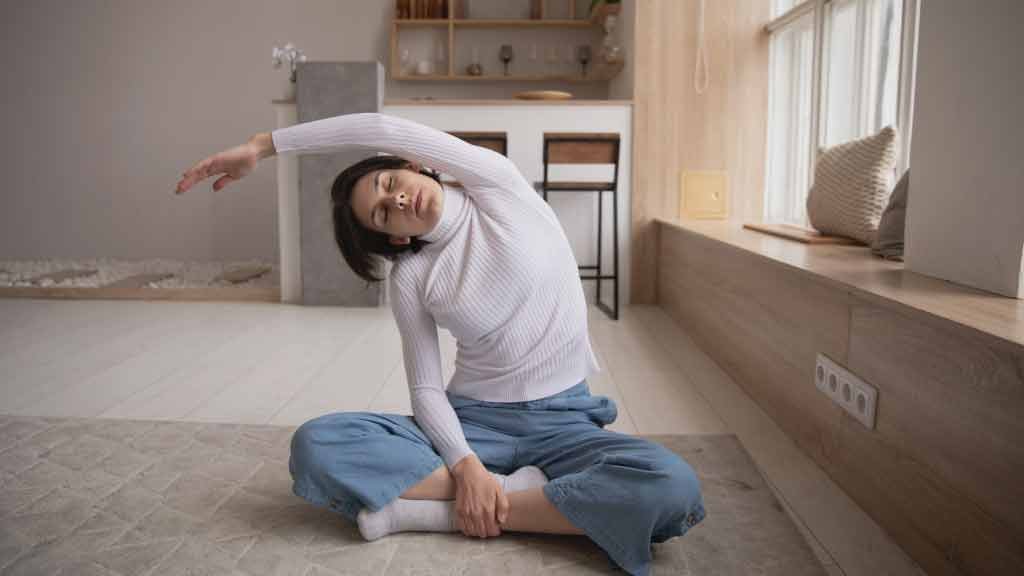Flexibility In Daily Life: Quick Changes, Big Impact
Simple Lifestyle Changes for How to Increase Flexibility
In the quest for enhanced flexibility, small tweaks in daily habits can make the significant difference. opt for the stairs instead of the elevator, take short stretching breaks during prolonged periods of sitting, and also stand or walk while on phone calls. These simple adjustments seamlessly integrate flexibility into your everyday life.
Incorporating Stretching into Daily Routines
Wondering how to increase flexibility effortlessly? Integrate stretching in your daily routines. Start your day with few gentle stretches, also incorporate stretching breaks at work and wind down with relax stretches before bedtime. These uncomplicated additions not only promote flexibility but also contribute to improved posture and reduced muscle tension.
The Cumulative Impact of Consistent Efforts
Consistency is the linchpin. The cumulative effect of small, consistent efforts amplifies flexibility gains over time. Whether it is five minute morning stretch or brief stretch session before bedtime, these regular practices compound, resulting in improved overall flexibility. Make it a habit to infuse flexibility enhancing activities into your daily life, and witness the transformative power of these seemingly modest adjustments.
In conclusion, enhancing flexibility need not be grand undertaking. By infusing simple changes into your daily routine, you pave the way for increased flexibility, better mobility and more vibrant, flexible you. So, how to increase flexibility? Start with these small, manageable shifts and watch flexibility become a natural part of your everyday life.
How to Increase Flexibility Fast: Embracing Flexibility
Reduced Risk of Injury and Enhanced Posture
Improved flexibility is more than just reaching for your toes, Its the key component of overall health. By enhancing flexibility, you reduce the risk of injury by promote the better joint range of motion and muscle elasticity. Additionally, increased flexibility contributes to enhanced posture, support the alignment of the spine and reduce the strain on muscles.
Positive Impact on Athletic Performance
Flexibility is not just for yogis, Its game changer for athletes too. Athletes with greater flexibility experience improved agility, range of motion and reduced muscle resistance. Whether you are a runner, weightlifter, or engage in any sport, increased flexibility translates to enhanced athletic performance, allows you to move more efficiently and with reduced strain.
Stress Reduction and Improved Relaxation
Furthermore flexibility is not limited to the physical, it extends its benefits to mental well being. Engage in flexibility enhance activities, such as stretching and yoga, fosters stress reduction and relaxation. These practices promote mindfulness and release tension, contribute to an overall sense of calmness and well being.
In essence, how to increase flexibility goes hand in hand with fostering an healthier more balanced life. Beyond the physical advantages, the positive impact on injury prevention, athletic prowess and mental well being underscores the holistic benefits of embrace flexibility. Make flexibility a cornerstone of your wellness journey, and experience the transformative power it brings to your body and mind
Conclusion: How to Increase Flexibility Fast
In conclusion about how to increase flexibility, unlocking greater flexibility is within your reach through five simple, accessible methods. Dynamic stretching, static stretching, Yoga, Pilates, and foam rolling all contribute to more limber and vibrant you. The key? Consistency. Make flexibility a part of your daily routine, dedicating the few minutes each day to these practices. As you embark on this journey, you are not just increasing flexibility, you are cultivating healthier lifestyle. Start today, implement these strategies and experience the positive transformation in your body and well being. How to increase flexibility? It begins with these easy steps, paving the way for more flexible and resilient you.
Relevant Posts:
PERFECT WEEK PLAN FOR WORKOUT
10 AMAZING YOGA BENEFITS FOR MEN
PLANK FOR BELLY FAT
FAQs :
Which is the best statement about joint flexibility?
The best statement regarding joint flexibility is that it is the range of motion achievable in a joint, reflect the muscles’ ability to stretch and move smoothly. Maintain the good joint flexibility is crucial for overall health, as it enhances mobility, reduces injury risk, and supports functional daily activities.
Why do activities like yoga, ballet, and gymnastics require better than normal flexibility ?
Activities like yoga, ballet, and gymnastics demand better than the normal flexibility because they involve intricate movements that require an extended range of motion. Furthermore improved flexibility aids in executing these movements gracefully, prevents muscle strain, and enhances performance, make these activities not only beautiful but also beneficial for overall physical well being.

